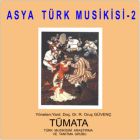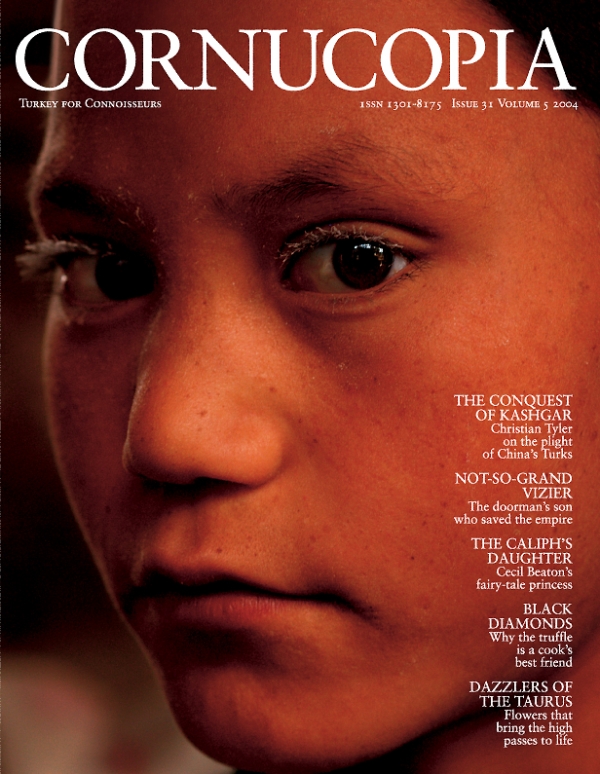Buy or gift a stand-alone digital subscription and get unlimited access to dozens of back issues for just £18.99 / $18.99 a year.
Please register at www.exacteditions.com/digital/cornucopia with your subscriber account number or contact subscriptions@cornucopia.net
Buy a digital subscription Go to the Digital EditionThe boiling of a happy new year. Charles Perry continues his travels along the foodways and byways of Central Asia
In most of the world, the new year begins not in the dead of winter but at the spring equinox, March 23. It’s a holiday eagerly anticipated in cold countries such as Iran, and Iranians’ enthusiasm for their Nouruz festivities proved catching in the Middle Ages. Nouruz was celebrated as far away as Moorish Spain. In Baghdad, it was a sort of Mardi Gras, a holiday of up-is-down – professors were forbidden to go to colleges on pain of being dunked in a pond.
It was celebrated in Turkey as well, of course. The Turks added a royal levee on March 29 known as Great Nevruz (Nevruz-i Buzurg). One of the oldest makams of Turkish classical music is named nevruz. There was even a sweet called nevruziye.
Over the centuries, Nevruz has mostly retreated to its Iranian homeland. But it continues to flourish in Central Asia, where there is a lively repertoire of Navroz dishes (Navroz being the Uzbek form).
Understandably, most involve whatever green plant foods are available in March. The essential Navroz dish is sumalak, the Central Asian equivalent of the Iranian samanu. It symbolises the promise of spring by being made from sprouted whole wheat, in which all the ripeness of summer lies invisibly coiled. To make sumalak, you sprout a kilo of wheat berries for ten days, grind them up and press out the juice. To the juice you add four kilos of wheat flour, a little oil and some pebbles, which bounce on the bottom of the cauldron to keep a burnt layer from building up, and boil it all night long. Women are the ones who make sumalak, singing traditional Navroz songs and telling jokes among themselves; the men may only bring firewood and water. By morning, it is thick and brown and rather sweet.
Both offering it and eating it confer a blessing for the new year, and some people make a point of tasting sumalak in as many homes as possible.
The communist regime viewed Navroz with grave suspicion, for reasons that are a little hard to fathom. It’s not a religious holiday. Perhaps the authorities decided to outlaw it on general principles as a possible rallying point for nationalistic sentiment.
During the decades-long campaign of cultural sovietisation, the food writer Karim Makhmudov worried that traditional Uzbek cuisine might be forgotten. The rather scholarly cookbooks he published from the Sixties through the Eighties purposely included some dishes which were virtually extinct.
However, he dared not write about sumalak. As it happens, I wrote to Makhmudov in the mid-Eighties with some questions about Uzbek food. He replied, but the answers were preceded by pages of Marxist-Leninist boilerplate about historical stages. Well, I had never corresponded with a scholar in a Soviet country before; for all I knew, that was how they wrote. But there turned out to have been something else going on.
When I finally visited Uzbekistan in 1993, I found to my surprise that the new Uzbek Minister of Protocol knew my name – he had been the translator for Makhmudov’s reply. He explained that a few months before my letter arrived, Mikhail Suslov, the feared chief theoretician of the Communist Party, had given a speech in Moscow denouncing Makhmudov by name as a professor of philosophy who was teaching people about cooking when he should have been teaching historical materialism.
Makhmudov had been a fashionable writer among Uzbek intellectuals, who’d kept his books on their coffee tables to show that, though they were progressives, they knew and honoured their heritage. But suddenly he was in black disgrace. His blood pressure shot up overnight.
It was at this desperate moment that my letter arrived. His ultra-Marxist reply was part of a scheme to get back into the regime’s good graces by showing that he was an internationally known scholar. When I met his family in Tashkent, they showed me the sad little booklet, containing his correspondence with me and two other foreigners, which he had submitted for the Al-Biruni Prize in the wan hope of clearing his name. It hadn’t worked. Makhmudov remained in disgrace until his death in 1990.
His family also showed me a videotape he had secretly shot during the 1970s showing how sumalak was made, for fear that the knowledge might be lost. They pointed out where they had concealed the tape in case the house was searched.
By 1993, all that fear and secrecy were in the past. The post-communist government of Uzbekistan could easily lift the ban on Navroz. When I arrived in Tashkent, there were actually banners on buildings reading “Have a Blessed Navroz” and you could buy pamphlets of Navroz recipes on the street – sumalak and all.
An easier Navroz recipe is kok chuchvara, a delightful ravioli filled with spring herbs. To make it, you should buy two dozen won ton wrappers. Or make them yourself: Mix two cups of flour, an egg and a teaspoon of salt. Knead hard for ten minutes on a lightly floured surface. Cover the dough with a towel or plastic wrap and let it rest for half an hour. Roll it out and cut into twenty-four 2-inch squares.
For the filling, fry half a pound of finely diced onions in half a cup of butter. Add a bunch of spring onions and two pounds of finely chopped mixed spring greens (such as mint, coriander, cress, sorrel or clover), with two teaspoons of salt and red pepper to taste. Cook until the greens are tender. Remove the greens, boil the pan juices down by half and mix again with the greens.
Use this to fill each square, folding over into a triangle and sealing the edges with beaten egg. Cook in boiling salted water until done – about four minutes. Drain and serve with butter and more red pepper.
Charles Perry was formerly food editor of the ‘Los Angeles Times’, is the co-author of ‘Medieval Arab Cookery’ and author of ‘A Baghdad Cookery Book’
Though Turkish truffles resemble their more famous European cousins in appearance, their fragrance – mellow and delicately fruity – is far milder.
More cookery features
Is this fantastic landscape about to become the new hotspot for wine-lovers? In Cornucopia 31 Kevin Gould heads for the oldest vineyards on earth to find out. Photographs by Frits Meyst
Born into penury, he rose to be revered across Europe. Yet the Ottoman Empire’s youngest ever grand vizier is all but forgotten at home. David Barchard charts the dramatic career of the master strategist Âli Pasha
When spring arrives in the high passes of the Taurus Mountains, a dazzling display of flowers comes out to greet it. Story and photographs by Martyn Rix.
SPECIAL OFFER: order three beautiful garden-themed issues, including this one, for only £60. List price £102
Her life is the stuff of fairy tales. Omar Khalidi tells the story of the princess who captivated Cecil Beaton
Xinjiang, formerly known as Chinese Turkestan, is home to some ten million people of Turkic descent. Their culture, language and religious beliefs still owe more to central Asia and the northern steppes than they do to China itself. As distant from the China Sea as it is from the Mediterranean, Xinjiang is a place of wild terrain and extreme climate, surrounded by high mountain ranges. By Christian Tyler

TÜMATA The Traditional Turkish Music Research and Promotion Society, Dr Rahmi Oruç Güvenç


Cornucopia works in partnership with the digital publishing platform Exact Editions to offer individual and institutional subscribers unlimited access to a searchable archive of fascinating back issues and every newly published issue. The digital edition of Cornucopia is available cross-platform on web, iOS and Android and offers a comprehensive search function, allowing the title’s cultural content to be delved into at the touch of a button.
Digital Subscription: £18.99 / $18.99 (1 year)
Subscribe now